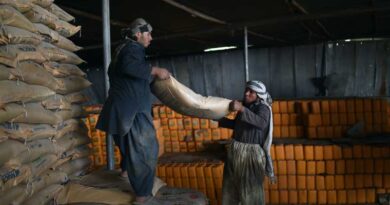Why Are Farmers Not Cultivating Makhana Which is Sold at Rs 800-900 Per Kg?
20 April 2024, New Delhi: Makhana, also known as foxnut, is typically cultivated in static water bodies such as ponds, depressions in the land, oxbow lakes, swamps, and ditches. These areas maintain a consistent water depth of 1-1.5 meters throughout the year. The plant thrives in humid to sub-humid conditions, with an optimal air temperature ranging from 20°C to 35°C. A relative humidity of 50-90% and an annual rainfall between 100-250 cm are conducive to its growth.
Why are farmers not cultivating Makhana
The farming of makhana is very labour intensive and the process of harvesting has no mechanization. The farmer has to get into the water pond and do manual harvesting. Harvesting is just the start. The main work starts when the seeds harvested are heated to pop into the white small ball called makhana is a long manual process. The process seems to be very laborious but the reward is high. Almost 90% of the makhana farming happens in Bihar with about 38 thousand hectares under cultivation and about 60,000 farmers involved. It yields 12-20 quintals/hectare and sells for Rs 700-800/kg.
Cultivation of Makhana
Makhana is a self-pollinated plant that primarily reproduces through seed propagation. On average, 90-100 kg of seeds are required for sowing per hectare of land. The preferred time for sowing is typically in December. Makhana seeds germinate underground (hypogeal), and thinning is carried out to maintain an appropriate plant density, with a spacing of one meter between individual plants.
From April to June, large round leaves can be observed floating on the water surface, indicating the growth of Makhana plants. Flowering and fruiting occur between May and October-November. Early fertilization during the flowering stage ensures successful self-pollination and the development of fruits. The fruits reach full maturity within 35-40 days after flowering.
Post-Harvest Processing of Fox Nut Seeds
After harvesting, the freshly cleaned fox nut seeds undergo a series of processing steps. Initially, they are sun-dried for approximately 2-3 hours to reduce the moisture content to around 25%. This drying process ensures better preservation of the seeds. Subsequently, the dried seeds with an optimal moisture percentage are graded to ensure uniform heating and popping.
For grading the seeds, wooden framed sieves of different sizes are utilized. These sieves have varying pore sizes, ranging from a maximum diameter of 12 mm to a minimum of 4 mm. This grading process helps to achieve uniformity in the size of the seeds.
The next step in the processing involves pre-heating. The sun-dried and graded seeds are heated in either an earthen pitcher or an iron pan while being continuously stirred. This pre-heating process prepares the seeds for the subsequent steps.
Following pre-heating, the seeds are stored under ambient conditions for a period of 48-72 hours. This allows for the equilibration of moisture, a process known as tempering. Tempering helps to stabilize the moisture content within the seeds.
Finally, the pre-heated and tempered seeds are roasted at a temperature of 300°C. They are cracked using a wooden hammer to obtain popped makhana, also known as makhana lava. The recovery rate for popped makhana is typically around 40-42%. On average, 100 kg of seeds yield approximately 38-40 kg of popped nuts.
To ensure proper storage, the popped makhana is packed in gunny bags lined with plastic. This packaging helps to maintain the freshness and quality of the product over an extended period.
By following these post-harvest processing steps, the popped makhana can be stored for an extended duration while retaining its taste and nutritional value.
Also Read: UPL receives ‘Well-Known Trademark’ by the Indian Trademark Registry
(For Latest Agriculture News & Updates, follow Krishak Jagat on Google News)















